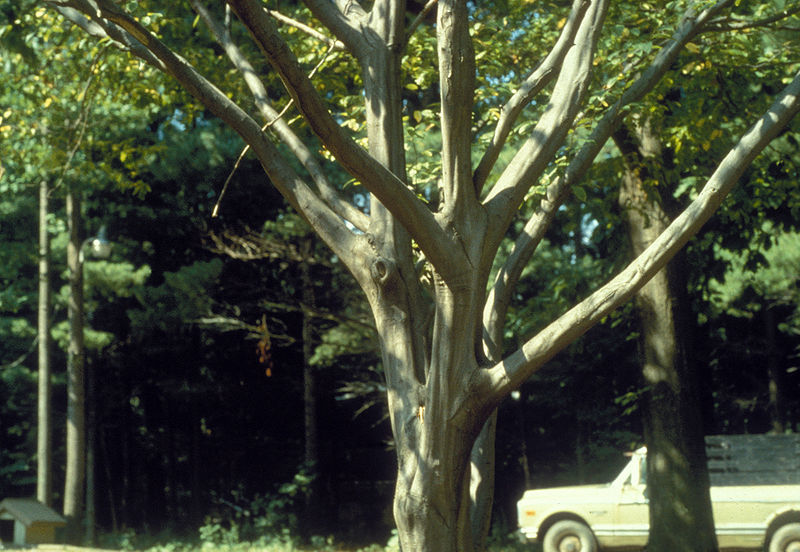This is the blue beech (Carpinus caronliniana) – one of my favourite trees of all time (since I seem incapable of picking just one). It is a unique tree species, not just because it has bluish bark (which does set it apart), not because it’s a Carolinian tree species (making it slightly less common in the GTA), but because has many names (blue beech, hornbeam, ironwood, and musclewood) – most of which are shared with another Ontario native tree species, the ironwood (Ostrya virginiana). Not in the least bit confusing…

Despite the confusion, all of its alternate names are very applicable. The wavy bluish bark of this tree species does tend to make it look like human muscles (musclewood) and the wood is very hard (ironwood), but because of the smaller size of the tree (when compared to say an oak tree), its marketable usage is limited to tool handles, mallet heads, and (in the past) hockey sticks. The name hornbeam comes from historically using the wood to make yokes for oxen (hornbeam) and its family name Carpinus comes from the use of Roman carriage wheels.

The blue beech is a lower canopy tree species so it usually grows up to 20 feet or so with a rounded crown that looks a bit flattened on top. Part shade is where it’s happiest, but it can manage everything from full sun to full shade if it needs to. This tree species belongs to the birch family, which is apparent in the leaf shape and size (smaller, triangular, with a toothed edge) – it even has catkins like the paper birch. In the fall, the leaves explode into bright reds and oranges, making it perfectly picturesque with the blue bark.

The small seeds produced in late summer/early fall are a very important food source for songbirds as well as squirrels, while the smaller branches are eaten by rabbits, beavers, and white-tailed deer. Blue beech are not common in the urban forest, but flourish nicely in the right conditions; they definitely aren’t drought tolerant but don’t require any extra care if in a shaded environment.
So many reasons for this tree to be added to your own list of favourite species! If you are looking to find some blue beech, there is a great mature population in Backus Woods (one of the best examples of a Carolinian forest in Ontario), that’s about 2 hours south of Toronto towards Simcoe.

LEAF offers blue beech as part of our Backyard Tree Planting Program, so if you’re looking for a unique, showy urban tree and want one of your own, contact us today to book a consultation with one of our arborists!
Join me next month when I switch gears a bit to explore the life history of the invasive and aggressive non-native, tree of heaven.
